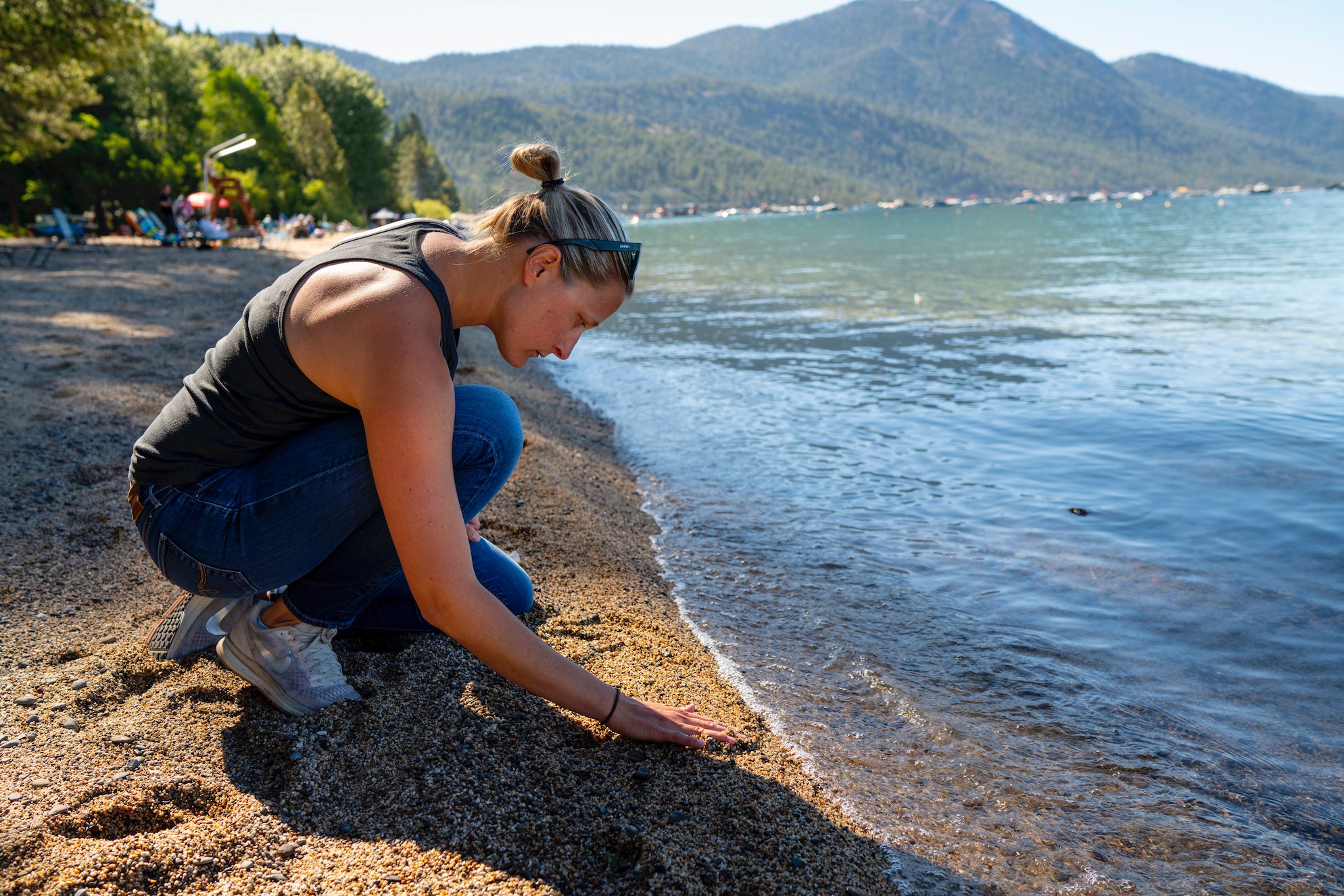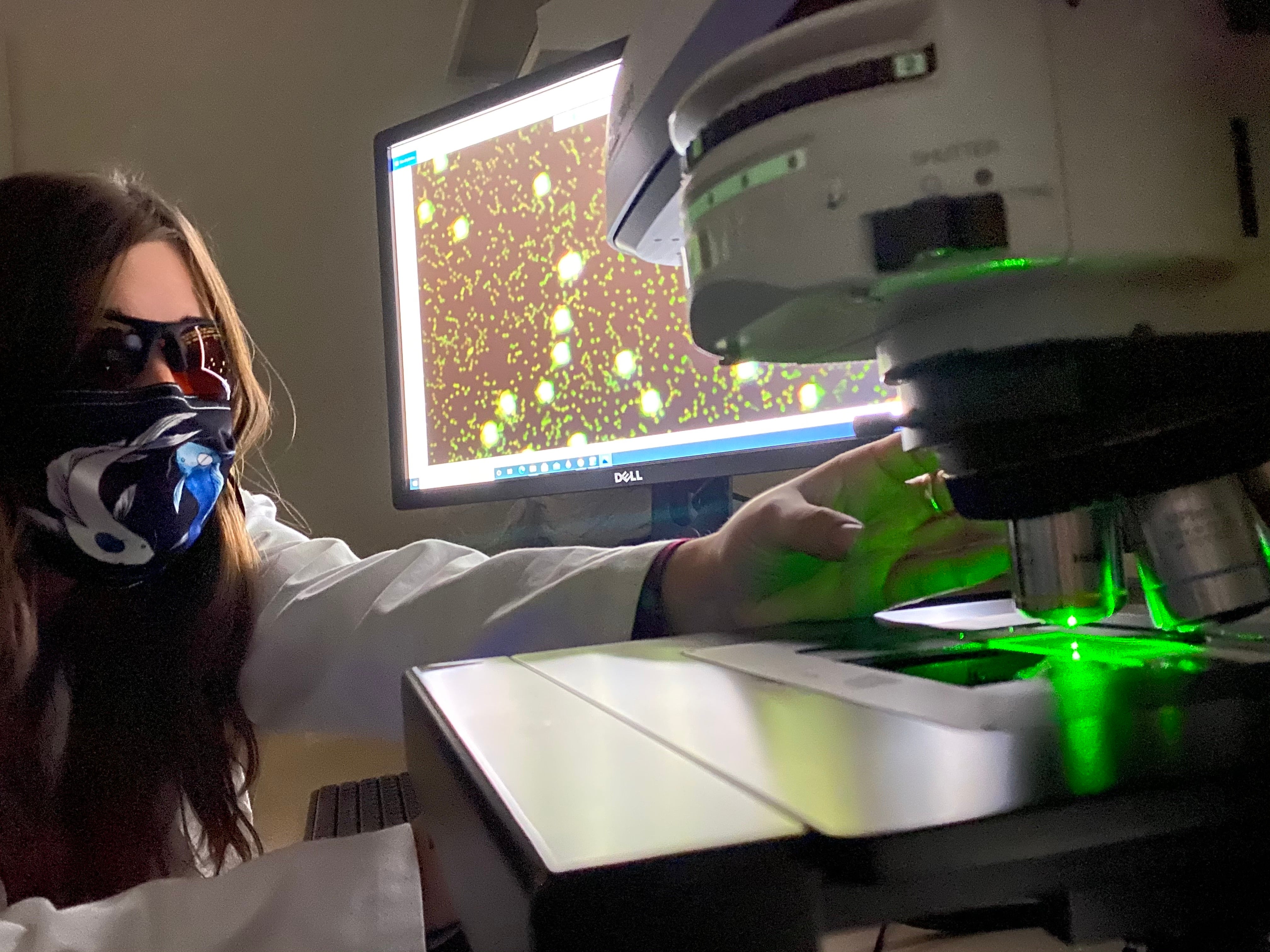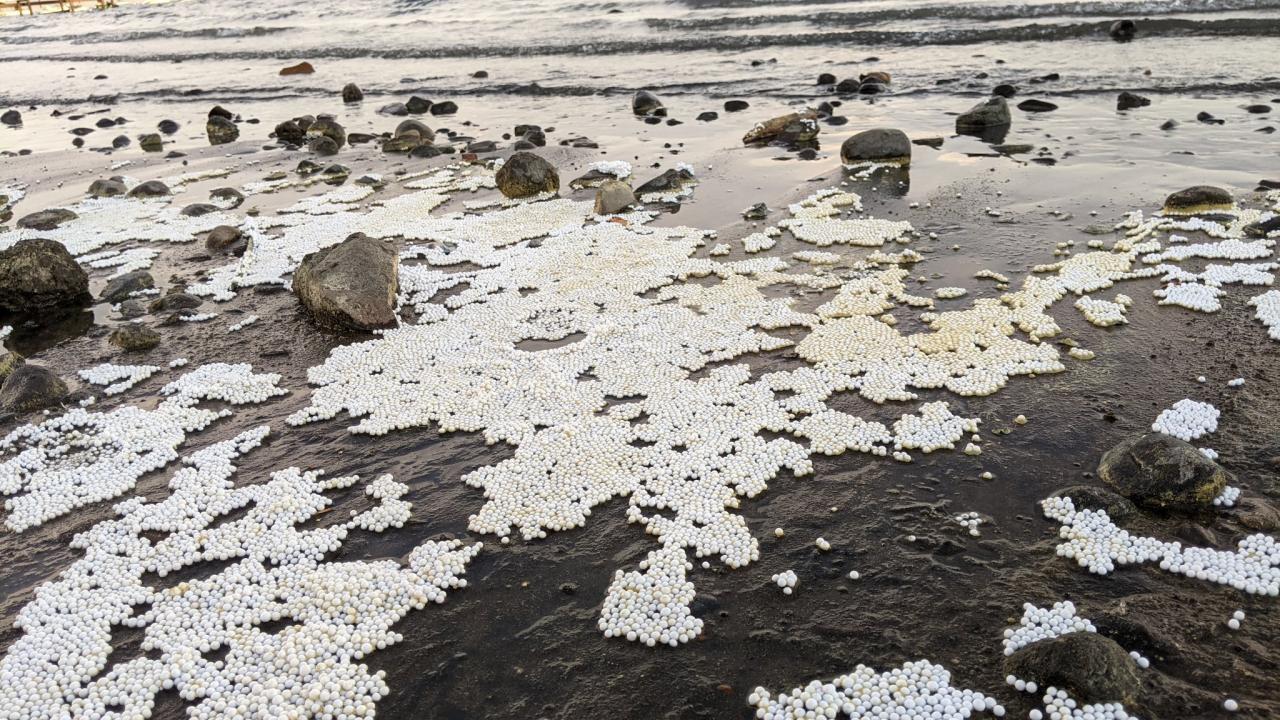A new trend of pool toys containing glitter and microbeads is complicating the already pervasive environmental problem of microplastic pollution.
University of California, Davis, scientists studying plastics pollution encourage beach-goers to take care to leave natural waterways as clean or cleaner than they found them this summer by reducing their use of all forms of plastic at the beach and leaving pool toys full of microbeads and glitter at home.
‘A microplastics bomb’
Pool toys are intended for use in pools, where, if they break, the damage is limited to that pool. But such toys are often brought to lakes, oceans, rivers and other water bodies. When they burst, their glittery, beady contents spill across the water and pollute aquatic and human environments.
Alison Toy, education program manager of the UC Davis Tahoe Environmental Sciences Center, or TERC, came upon such a scene at Lake Tahoe’s Moon Dunes Beach in early July. Thousands of tiny foam balls floated across the surface. She quickly shared the damage and the offending pool toy on her Instagram account, which spurred a cleanup and regional media interest.
“It was like a microplastics bomb exploded on the beach,” said Toy’s colleague Katie Senft, a TERC field researcher who studies microplastics. “It was heartbreaking to see polyethylene balls all over our beautiful shoreline.”
Senft is leading a research project to determine the fate of microplastics at Lake Tahoe. It involves trawling for plastics and examining the bellies of fish and clams to understand food chain impacts. A microplastic is about the size of a rice grain or smaller. Senft has found fragments of toys, bottles, diapers, chip bags and more.

All that glitters
A 2015 study from UC Davis estimated that 8 trillion microbeads alone are emitted every day into U.S. waters. Pool floats full of microbeads and glitter that can smash against rocks and rip open add a troublesome layer.
“Glitter is impossible to clean up in your house,” Senft said. “Imagine trying to clean it up from a lake or beach.”
Jenessa Gjeltema, assistant professor of zoological medicine at the UC Davis School of Veterinary Medicine, conducts plastic analysis while also working to improve methodology to more accurately assess the health impacts of plastics in the environment. With her background in practicing veterinary medicine for wildlife, she’s interested in the interrelated impacts of plastics on wildlife, humans and the environment.
“Think about how many particles you might release in a simple teaspoon of glitter,” Gjeltema said. “What may have been intended to be used for only a few minutes may then remain in the environment for hundreds or thousands of years. Glitter may seem like a wonderful magical moment, but it’s a moment that extends for such a long time afterward, and we are only at the tip of the iceberg of learning what the effects of that will be.”
Gjeltema notes that some of the known impacts for wildlife and ecosystems include:
- Entanglements. While tangled sea turtles may come to mind, tiny plankton can get twined up in microplastics, too.
- Microbeads are often the size and shape of a fish egg, and wildlife can and do mistake them for food.
- Plastics contain a variety of potentially harmful chemicals, which are released over time into the environment.
- Plastics can serve as a vehicle for hazardous substances. For instance, plastic can absorb pollutants from the environment and transfer them to animals, like filter-feeding mussels at a lake or ocean bottom.

Plastic and pathogens
Karen Shapiro, an infectious disease expert at the UC Davis School of Veterinary Medicine, investigates interactions between microplastic pollution and pathogens. Her team is incubating microfibers and microbeads with specific parasites, including Toxoplasma gondii, a key threat for sea otters, Hawaiian monk seals, and Hector’s and Māui dolphins.
Her preliminary work shows that zoonotic pathogens, which impact humans and people, can attach to microplastic, becoming plastic hitchhikers for potentially long distances.
“The ability of pathogens to interact with organic material was known — one could argue it’s even natural,” Shapiro said. “But never before have we just dumped all of this anthropogenic pollution that can also act as a vector for moving parasites around.”
4 things to do
- Keep pool floats full of microbeads and glitter away from natural waterways, and reduce plastic use in general. If you do bring a pool float to the beach, choose something that won’t easily rupture, and make sure it returns home with you.
- Be a conscious consumer and consider the life cycle of plastic. Your day at the beach could leave a lasting mark on the environment.
- Be clothes-conscious. Microfibers from clothes — and laundry machines — often make their way into waterways. Buying clothes made from natural fibers, like cotton, rather than synthetic material can reduce the amount of microfibers entering lakes, rivers and oceans. Doing laundry less often can also lighten the microfiber load on waterways, and on your housework.
- Think reusable. Bringing your own reusable bag while shopping, using reusable water bottles, and choosing reusable storage containers over single-use plastic bags also continue to be more sustainable options.
“Anything a family or individual can do to reduce plastic purchasing and turnover in the household is going to help,” Shapiro said.
Media Resources
Media Contacts:
- Katie Senft, UC Davis Tahoe Environmental Research Center, kjsenft@ucdavis.edu
- Jenessa Gjeltema, UC Davis School of Veterinary Medicine, jgjeltema@ucdavis.edu
- Karen Shapiro, UC Davis School of Veterinary Medicine, kshapiro@ucdavis.edu
- Kat Kerlin, UC Davis News and Media Relations, 530-750-9195, kekerlin@ucdavis.edu
